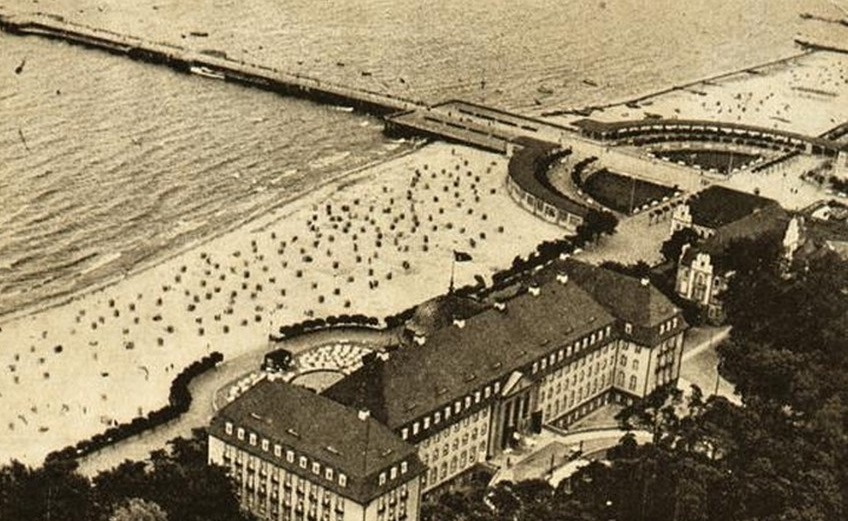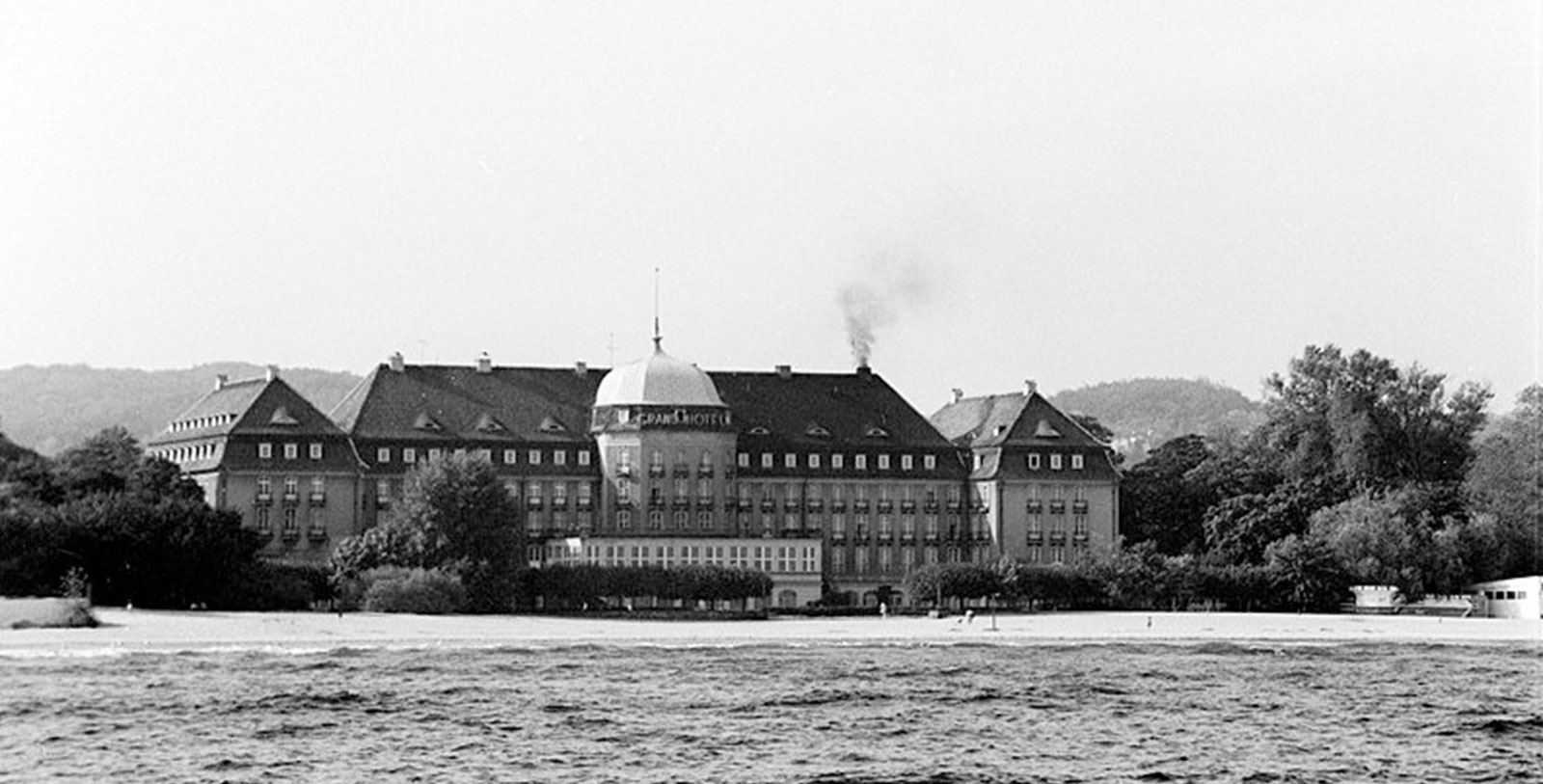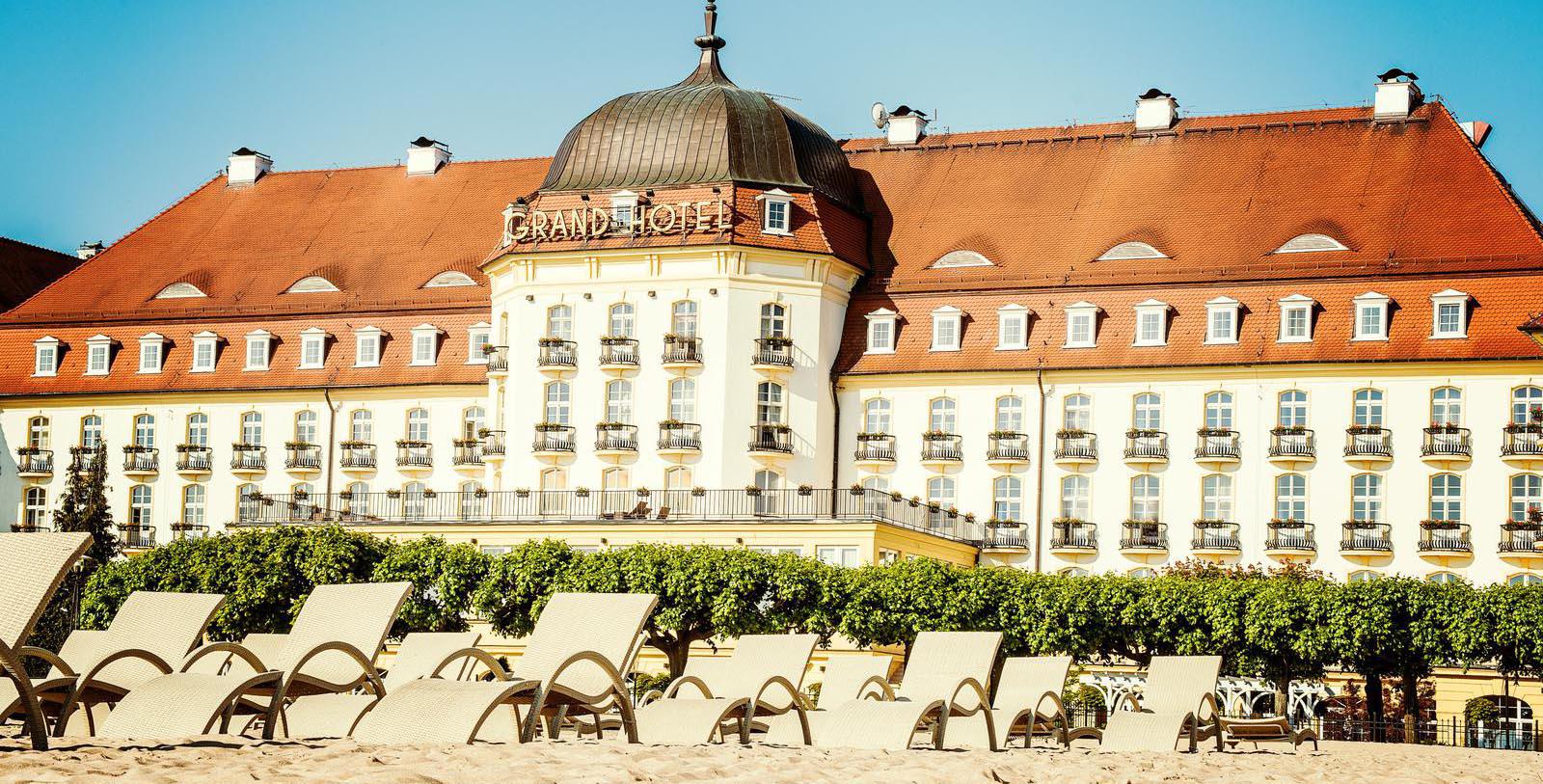Receive for Free - Discover & Explore eNewsletter monthly with advance notice of special offers, packages, and insider savings from 10% - 30% off Best Available Rates at selected hotels.
history
Discover the Sofitel Grand Sopot, which originally debuted as the Kasino Hotel during the 1920s.
Sofitel Grand Sopot, a member of Historic Hotels Worldwide since 2018, dates back to 1927.
VIEW TIMELINE
The Sofitel Grand Sopot on CNN
Learn about the hotel’s brilliant history in this interesting overview.
WATCH NOWBuilt at the cost of more than $3.5 million, the Sofitel Grand Sopot originally debuted as the “Kasino Hotel” during the 1920s. Designed by Otto Kloeppel, the hotel’s magnificent Art Deco architecture and thrilling casino quickly attracted the elite throughout Europe. The hotel specifically became a popular destination for millionaires from across the continent who came to gamble. Many historical stories persist that most of these entrepreneurs and aristocrats lost their fortunes at the hotel. One such tale involves the town’s mayor, Dr. Eric Laue, who helped to finance the Kasino Hotel. This well-known local politician promoted the development of Sopot’s historic buildings and landmarks, including the Sopot Pier, the Forest Opera, and the city’s Resort House. Despite the obstacles presented by World War II, the hotel managed to survive. The building reopened shortly following the war with a new name—"Grand Hotel.” It passed through several owners including the Gdynia-America Shipping Company, the Polish Ocean Lines Group, and finally the state-owned hotel operator Orbis. The hotel continued to welcome international guests and was a choice hotel for politicians during the Cold War. With the start of the Sopot Music Festival in the 1960s, the hotel became well known by international stars who performed at the festival. Once again, the Grand Hotel assumed its place as one of the notable holiday destinations in all of Poland. A new casino was subsequently created in 1990 and the hotel was acquired by the AccorHotels Group. The hotel was closed and completely modernized after the acquisition, re-opening as the “Sofitel Grand Sopot” in 2006. A member of Historic Hotels Worldwide since 2018, the Sofitel Grand Sopot has since reemerged as one of Poland’s most sought-after vacation retreats.
-
About the Location +
Located between the two major Polish cities of Gdynia and Gdańsk, Sopot has long been a popular vacation destination along the coast of the Baltic Sea for generations. The earliest known settlements to reside in the region firs appeared around the 7th century after a few local feudal lords constructed a rudimentary fortress. The citadel specifically served as a trading outpost for merchants destined to head further up the nearby Vistula River, offering them shelter from all kinds of danger. But the importance of the fortress had diminished significantly by the start of the 10th century, resulting in its near abandonment. Those who remained formed a number of fishing villages nearby, including “Stawowie,” “Gręzowo,” and “Świemirowo.” The quaint hamlet of “Sopoth” had also emerged, too, operating under the control of a neighboring Cistercian abbey founded in the late 12th century. All of the towns existed in relative isolation for the next few centuries, until aristocrats from Gdańsk began to construct various manor houses throughout the region in the 1500s. Sopoth in particular became the village that saw the greatest proliferation of stately country palaces, as many nobles had grown captivated by its intrinsic beauty. In fact, King John II of Poland and his wife, Queen Marie Louise Gonzaga, had even purchased one of the brilliant palatial mansions for their own use as a seasonal vacation home. And another nearby structure called the “Swedish House” later became the personal retreat for the Polish kings Augustus the Strong and Stanisław Leszczyński.
In the first half of the 18th century, Sopoth and the other villages in the area endured great hardship. The War of Polish Succession led great armies to the vicinity of Sopoth, with the Russians ransacking the community upon their march to Gdańsk. Many of the noble families in Sopot fled the carnage as the town was completely burnt to the ground. For years the aristocrats avoided returning to Sopoth, exhausted both emotionally and financially from the hardships of war. Fortunately, a couple of those families decided to return in the 1750s, which gradually saw the reconstruction of Sopot and its renowned estates. Among the people most responsible for Sopoth’s revitalization were the Przebendowski family, who directly renovated many of the deserted homes. Another renowned family, the Sierakowskis, constructed their own unique palace atop the ruins of the Swedish Manor, which they called the “Sierakowski Mansion.” Thanks to the efforts of individuals like the Przebendowskis and the Sierakowskis, Sopot eventually returned to its earlier grandeur around the beginning of the early 19th century. By this point, the Kingdom of Prussia had annexed Sopot and the surrounding countryside. The tiny village of Sopoth became known as “Zoppot,” and emerged as a popular vacation retreat for the Prussian Junker class.
Recognizing the economic potential that Prussia’s nobility represented, a few enterprising businesspeople attempted to transform Zoppot into a resort community by opening bathhouses and spa facilities throughout the town. The person who achieved the greatest success at the time was a former French medic named Jean Georg Haffner, who developed dozens of luxurious facilities throughout the community. Zoppot’s population started to grow exponentially, despite Haffner’s death just a years into the project. (His son-in-law, Ernst Adolf Böttcher, would take over afterward.) Construction in Zoppot continued unabetted over the next several decades, with all sorts of municipal services debuting across the town, like electricity, gas, and access to railway transportation. Perhaps the greatest structure to appear at the time was a 278-foot-long wooden pier that extended out into the Baltic Sea. Zoppot’s population had also grown to the point where its borders began to engulf its neighboring hamlets. By the height of the Victorian Age, Zoppot had truly been reborn as a modern city! Despite the increase of its size, the seaside community very much remained a popular holiday destination. Numerous hotels, restaurants, theaters, and sanatoria dotted the landscape, which had started to attract guests from places as far away as Warsaw, Königsberg, and Berlin. Emperor Wilhelm II of Germany was even a regular visitor to Zoppot, who often patronized the many spas that lined city’s shoreline.
In the aftermath of World War I, Zoppot joined the newly created Free City of Danzig that operated in a customs union with a revitalized Polish state. (Danzig was the name of Gdańsk at the time.) Despite the change to its national borders, the city nonetheless remained an immensely popular tourist attraction. To meet the surge in popularity, local entrepreneurs opened even more hotels, inns, and resorts, with the greatest among them being the iconic Kasino Hotel (today’s Sofitel Grand Sopot). The renowned wooden pier was even extended to reach a world-record setting length of nearly 1680 feet! Unfortunately, the onset of the Second World War brought a swift end to Zoppot’s historic golden age, as the Germans quickly occupied the region in September of 1939. Zoppot subsequently suffered greatly under Nazi rule, with a substantial portion of its buildings destroyed in fighting against the Russian military in 1945. But Zoppot thankfully recovered in the aftermath of the war, reborn as the city of “Sopot” within the liberated Polish state. Sopot has since remained one of Poland’s most celebrated resort communities, as it has continued to allure hundreds of thousands of visitors every year. Today, it is home to many unique cultural attractions, like the Molo w Sopocie (Pier in Sopot), the Krzywy Domek, and the Państwowa Galeria Sztuki (State Gallery Of Art). Sopot also serves as the host of the Sopot International Song Festival, which the largest music content in Europe after Eurovision.
-
About the Architecture +
The brilliant Sofitel Grand Sopot displays some of the finest Art Deco architecture in all of Poland. Art Deco architecture itself is among the most famous architectural styles around today. The form originally emerged from a desire from architects to break with past precedents to find architectural inspiration from historical examples. Instead, professionals within the field aspired to forge their own design principles. More importantly, they hoped that their ideas would better reflect the technological advances of the modern age. As such, historians today often consider Art Deco to be a part of the much wider proliferation of cultural “Modernism” that first appeared at the dawn of the 20th century. Art Deco as a style first became popular in 1922, when Finnish architect Eliel Saarinen submitted the first blueprints to feature the form for contest to develop the headquarters of the Chicago Tribune. While his concepts did not win over the judges, they were widely publicized, nonetheless. Architects in both North America and Europe soon raced to copy his format in their own unique ways, giving birth to modern Art Deco architecture. The international embrace of Art Deco had risen so quickly that it was the central theme of the renowned Exposition des Art Decoratifs in Paris a few years later. Architects the world over fell in love with Art Deco’s sleek, linear appearance defined by a series of sharp setbacks. They also adored its geometric decorations that featured motifs like chevrons and zigzags. But despite the deep admiration people felt toward Art Deco, interest in the style gradually dissipated throughout the mid-20th century.
-
Famous Historic Guests +
Marlene Dietrich, actress known for her roles in Morocco, Shanghai Express, and The Blue Angel.
Greta Garbo, actress known for her roles in Grand Hotel, Romance, and Anna Christie.
Clark Gable, actor known for his roles in It Happened One Night, Mutiny on the Bounty, Gone with the Wind.
Josephine Baker, celebrated American-French icon from the Jazz Age and renowned Civil Rights leader.
Charles Aznavour, singer who sold well over 180 million records in his lifetime.
Henry Kissinger, 56th U.S. Secretary of State (1973 – 1977)
Charles de Gaulle, World War II hero and President of France (1959 – 1969)
Ignacy Mościcki, President of Poland (1926 – 1939)
Prince Rainier III of Monaco (1949 – 2005)
King Alfonso XIII of Spain (1886 – 1931)


























